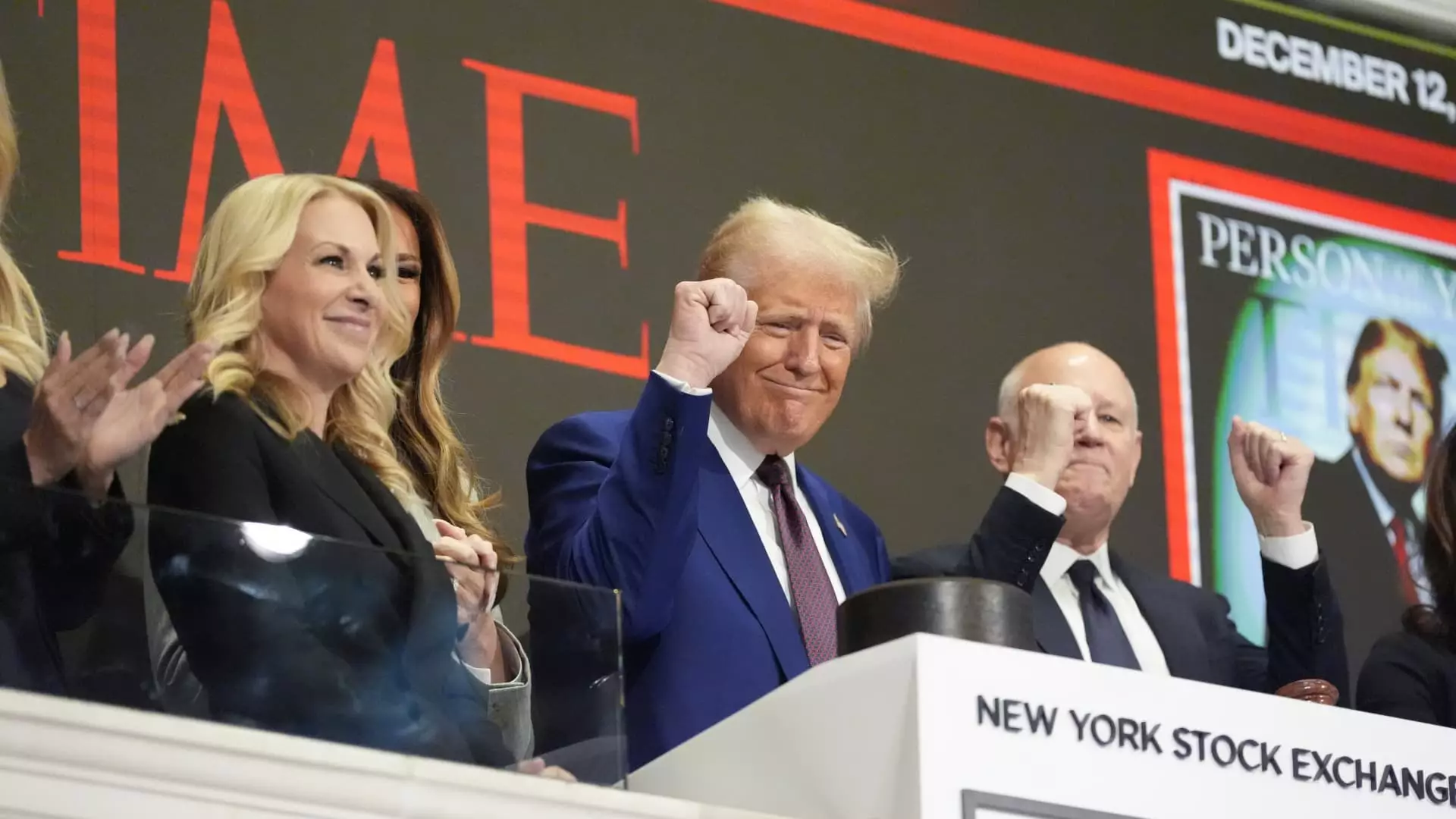On a historic Thursday, President-elect Donald Trump created waves at the New York Stock Exchange (NYSE) as he ceremonially rang the opening bell, an act laden with significance. Accompanied by high-profile figures including Vice President-elect JD Vance and his family, Trump delivered an unwavering message of economic optimism to a buoyant crowd of traders and business leaders. His appearance came shortly after he was honored as Time magazine’s “Person of the Year” for the second time, showcasing not only his media presence but also his firm grasp on American enterprise sentiments.
Trump’s promise of economic revitalization resonated deeply with the gathered audience, which included heavy hitters from Wall Street such as Goldman Sachs’ David Solomon and Citigroup’s Jane Fraser. The atmosphere was charged with excitement, as traders and business leaders rallied around Trump, chanting “U-S-A” in unison. This palpable enthusiasm reflected not just an endorsement of Trump the individual, but also a collective hope for a robust economic comeback under his leadership.
At the heart of Trump’s remarks was a resolute commitment to crafting an economic landscape unlike any seen before. His vision encompassed ambitious tax reforms intended to invigorate corporate investment within the United States. Trump specified that he aims to reduce the corporate tax rate from its current 21% to a compelling 15% for companies that prioritize domestic manufacturing. This strategic push for incentivizing local production stands as a cornerstone of his economic platform, echoing prior promises from his first term in office.
In a bold assertion, Trump contended that his administration would accelerate oil drilling as a means to combat inflation, directly aiming to lower grocery prices for American families. However, this narrative reveals an intricate juxtaposition: while he pledges to alleviate consumer costs, he acknowledges the inherent challenges of managing prices once they have escalated. Such rhetoric indicates not only confidence but also a calculated understanding of economic dynamics at play.
Trump’s reinvigoration of the stock market has been attributed, in part, to his election victory over Vice President Kamala Harris. This sentiment showcases a significant element of Trump’s appeal: the prospect of familiarity and accessibility for business leaders. In his interactions with prominent figures from the tech and investment sectors—including Mark Zuckerberg, Elon Musk, and Jeff Bezos—Trump positions himself as a leader who values input from America’s economic powerhouses. This not only bolsters his credibility but also indicates a willingness to forge relationships that can ultimately benefit both Wall Street and Main Street.
Scott Bessent, Trump’s pick for Treasury Secretary, echoed this dual-benefit approach, highlighting that both the wealthy and the average American could experience prosperity under Trump’s governance. This assertion plays to a growing narrative that the nation can thrive through a symbiotic relationship between elite interests and the broader economic landscape.
As Trump prepares to assume office on January 20, he must navigate a complex economic landscape marked by pre-existing challenges and opportunities. His ambitious pledges to stimulate the economy, cut taxes, and increase domestic manufacturing are undeniably energizing, yet they are also fraught with potential pitfalls. Critics may challenge the feasibility of his promises, particularly regarding inflation and consumer prices, which remain sensitive issues for many Americans.
The consequences of Trump’s economic policies on everyday citizens will be under the microscope, as the tangible effects of his strategies unfold. While the stock market may benefit from his election—marked by a quick rally and positive sentiment—sustaining this momentum will require deft maneuvering against both domestic and global economic hurdles.
Trump’s NYSE appearance was more than just a ceremonial act; it was a bold proclamation of confidence in his vision for the U.S. economy. His capacity to translate enthusiasm into actionable policy will determine whether this vision becomes a reality or remains a flicker of optimism amidst broader challenges. As all eyes turn to Washington, the coming months will undoubtedly be pivotal, testing the resilience of Trump’s economic agenda.

Leave a Reply